If you’ve ever walked past a towering cottonwood tree without giving it a second thought, you’re not alone. Most people see it as just another tree, unaware of its powerful medicinal properties.
However, herbalists and natural healers have been using cottonwood for centuries to relieve pain, reduce inflammation, and promote skin health.
Packed with healing compounds like salicylates, flavonoids, and antioxidants, this natural wonder might just be the remedy you’ve been missing. Keep reading to uncover why cottonwood deserves a spot in your herbal toolkit.

The Secret Healing Powers of Cottonwood Most People Ignore
1. Relieves Pain and Inflammation
Cottonwood buds contain salicylates, the same compound found in aspirin, making them a powerful natural pain reliever. According to herbalists, using cottonwood-infused oil can help soothe sore muscles, arthritis, and joint pain.
The anti-inflammatory properties also work wonders for reducing swelling and discomfort. Regular use can provide long-term relief, especially for chronic pain sufferers.
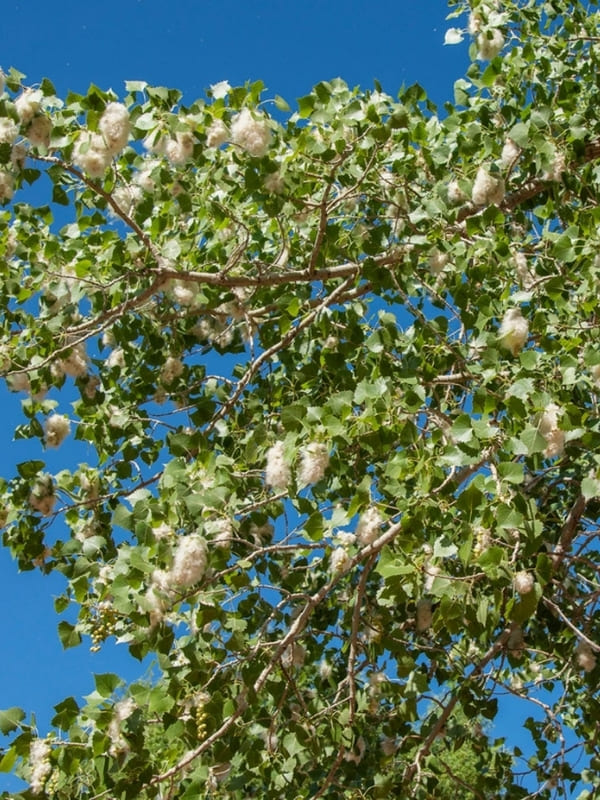
2. Speeds Up Wound Healing
Cottonwood has strong antibacterial and antifungal properties, making it ideal for treating cuts, burns, and scrapes.
A study published in the Journal of Ethnopharmacology showed that cottonwood extracts help prevent infections while promoting faster healing.
Applying a cottonwood salve can protect minor wounds and accelerate skin regeneration.
3. Soothes Skin Irritations
If you struggle with eczema, rashes, or dry skin, cottonwood oil might be your new best friend. The tree’s natural anti-inflammatory and moisturizing properties help calm redness and irritation.
Many herbalists use cottonwood-infused oil to create healing balms for sensitive skin.

4. Supports Respiratory Health
Traditionally, cottonwood bark and buds have been used to ease respiratory issues like congestion and coughs. The expectorant properties help loosen mucus, making it easier to breathe.
Some herbal teas or steam infusions with cottonwood can provide soothing relief during cold and flu season.
5. Acts as a Natural Antiseptic
The resin in cottonwood buds is a powerful antiseptic, helping to fight bacteria and infections. This makes it an excellent addition to homemade first-aid kits.
Cottonwood tinctures or infused oils can be applied to minor cuts and scrapes to prevent bacterial growth.

6. Eases Menstrual Cramps
The pain-relieving and anti-inflammatory effects of cottonwood make it a natural remedy for menstrual discomfort.
Using cottonwood oil as a massage treatment for abdominal cramps can provide soothing relief without relying on over-the-counter painkillers.
7. Helps with Muscle Recovery
Athletes and active individuals love using cottonwood-infused oil to relax sore muscles after workouts. The salicylates and flavonoids work together to reduce inflammation and speed up recovery.
A gentle massage with this oil can help loosen tight muscles and prevent stiffness.

How to Harvest and Prepare Cottonwood Buds
Cottonwood buds are best harvested in late winter or early spring when they are sticky with resin. Follow these steps to collect and prepare them for herbal use:
- Find the right tree: Look for fallen branches after a storm or pick buds directly from trees that are not heavily trafficked or polluted.
- Collect the buds: Use gloves or a small knife to gather buds, as they can be quite sticky.
- Dry or infuse immediately: Dry the buds in a cool, dark place for long-term storage. If making an oil or tincture, use fresh buds for the best potency.
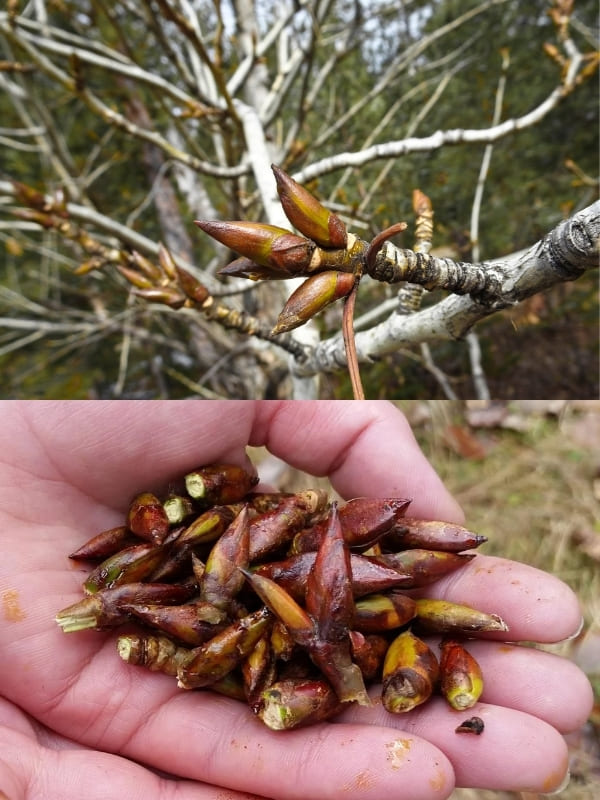
How to Use Cottonwood for Maximum Benefits
1. Cottonwood Infused Oil
Ingredients:
- 1 cup fresh or dried cottonwood buds
- 1.5 cups carrier oil (olive, coconut, or jojoba)
- A glass jar with a lid
Instructions:
-
Fill a glass jar halfway with cottonwood buds.
-
Pour olive oil over the buds until fully submerged.
-
Seal the jar and let it sit in a warm, sunny spot for 4–6 weeks, shaking occasionally.
-
Strain out the buds and store the oil in a dark glass bottle.
-
Use as needed for pain relief, skincare, or massage therapy.
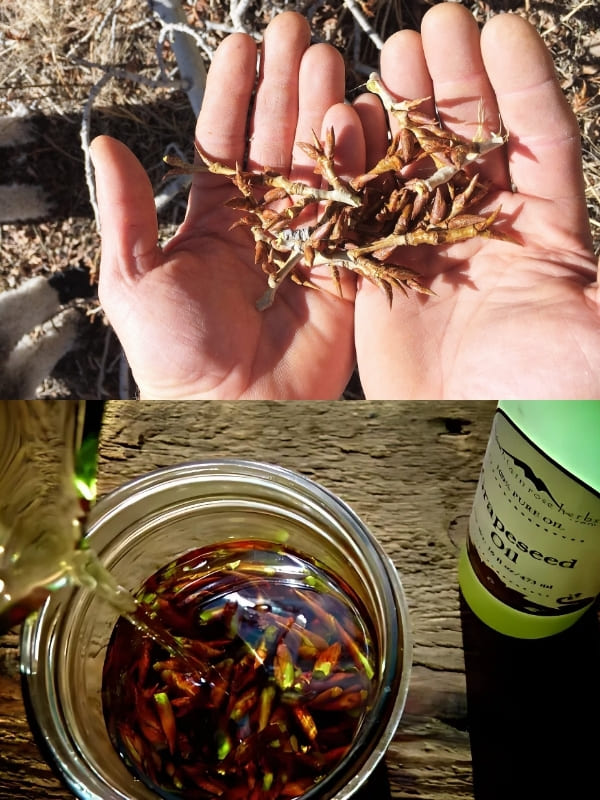
2. Cottonwood Salve
Cottonwood salve is an excellent natural remedy for sore muscles, joint pain, and dry skin. Here’s how to make it:
Ingredients:
- 1 cup cottonwood-infused oil
- 1 ounce beeswax
- 10 drops essential oil (optional, like lavender for added soothing effects)
Instructions:
- In a double boiler, gently melt the beeswax.
- Once melted, slowly add the cottonwood-infused oil, stirring well.
- Remove from heat and add essential oil if desired.
- Pour the mixture into small tins or jars and let it cool completely before sealing.
- Use as a soothing balm for sore muscles, minor cuts, or dry skin.
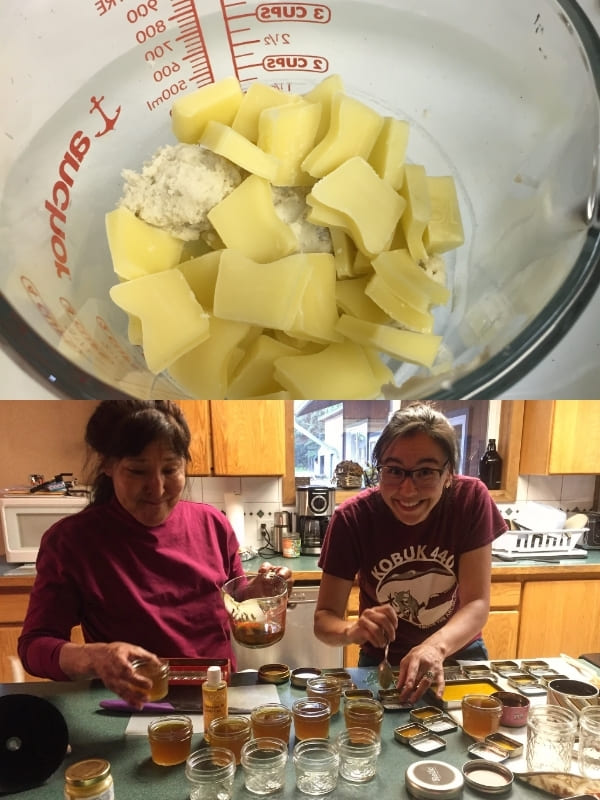
3. Cottonwood Tincture
A cottonwood tincture provides a concentrated way to enjoy its medicinal benefits. Here’s how to make it:
Ingredients:
- Fresh or dried cottonwood buds
- High-proof alcohol (vodka or grain alcohol)
- A glass jar with a lid
Instructions:
- Fill a glass jar halfway with cottonwood buds.
- Pour alcohol over the buds until completely submerged.
- Seal the jar and store it in a dark place for 4–6 weeks, shaking it occasionally.
- Strain out the buds and store the tincture in a dark glass dropper bottle.
- Take a few drops as needed for pain relief or as a natural antiseptic.
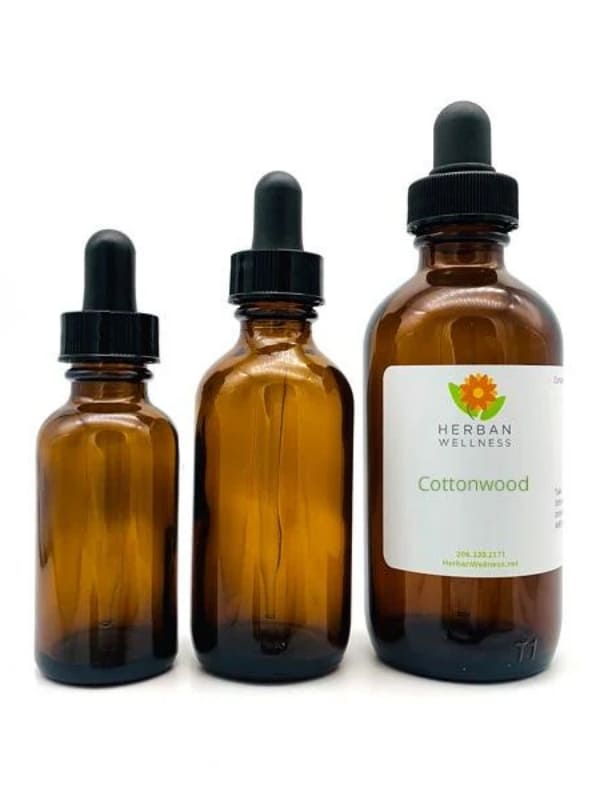
Cautions and Precautions
While cottonwood is a powerful natural remedy, it’s not for everyone. People allergic to aspirin should avoid it due to its salicylate content.
Pregnant women and those with sensitive skin should do a patch test before using cottonwood-based products. Always start with small amounts to test for any reactions.
Disclaimer
This article is for informational purposes only and is not a substitute for professional medical advice. Always consult with a healthcare provider before using herbal remedies, especially if you have pre-existing health conditions.
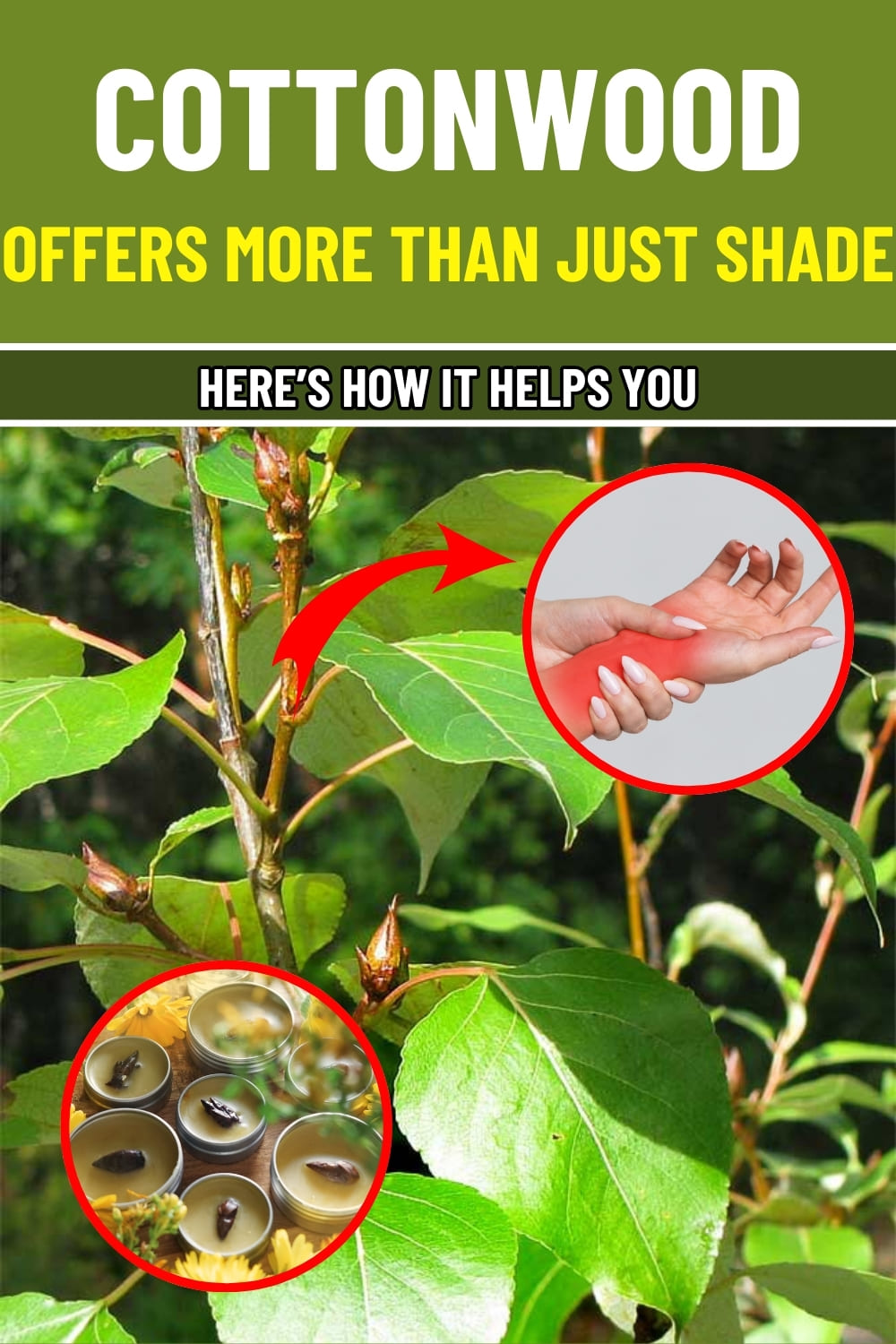
Cottonwood Offers More Than Just Shade and Here’s How It Helps You
